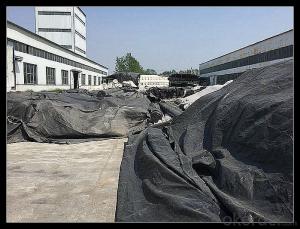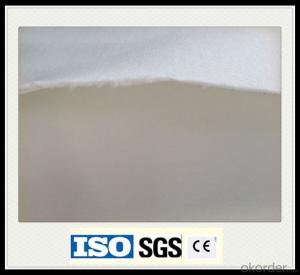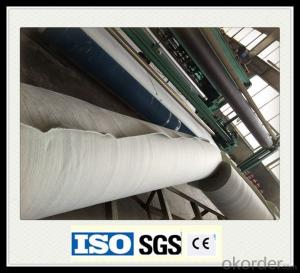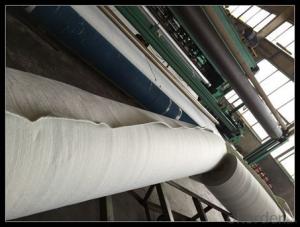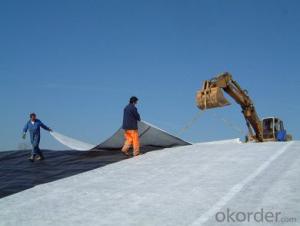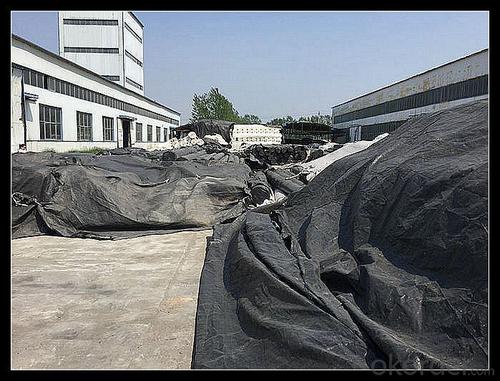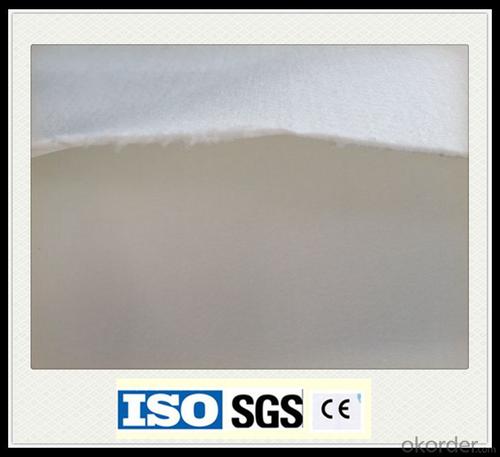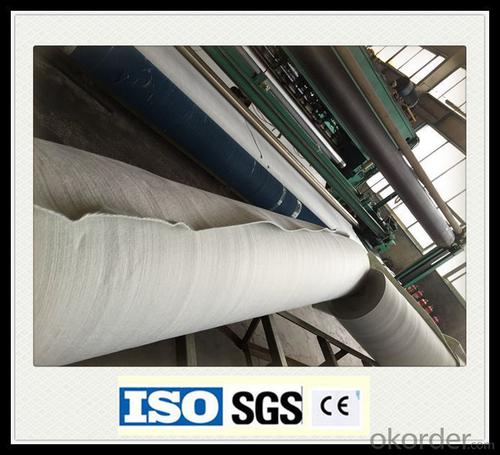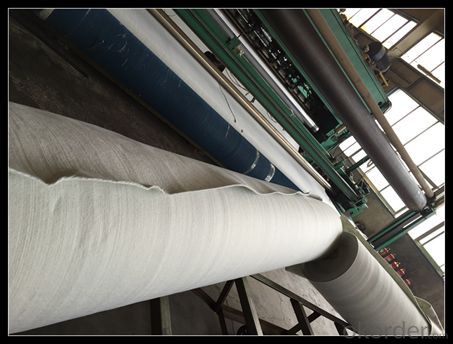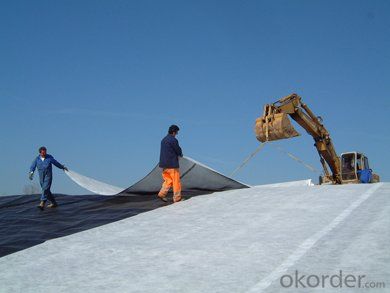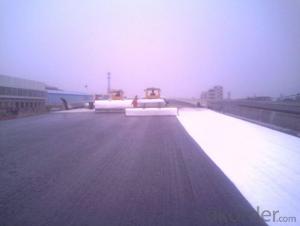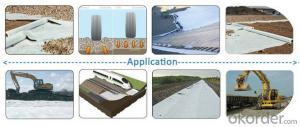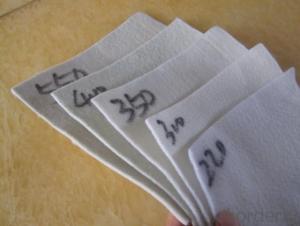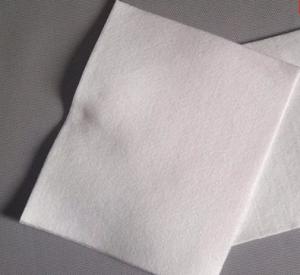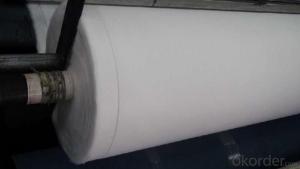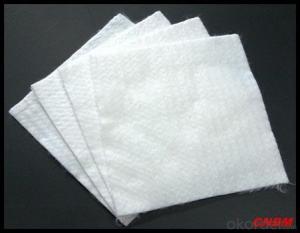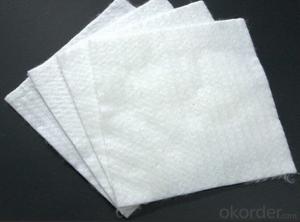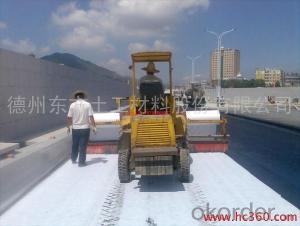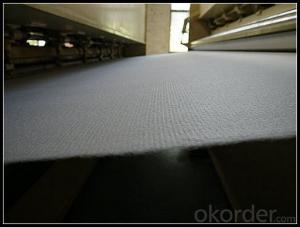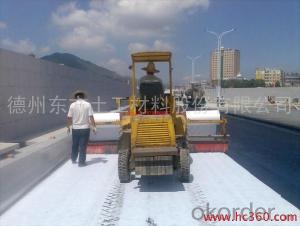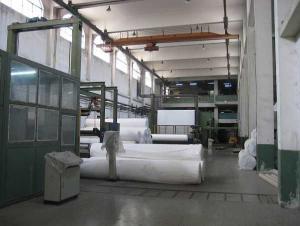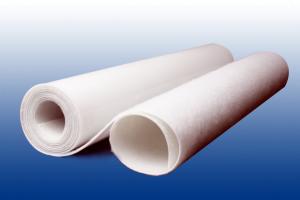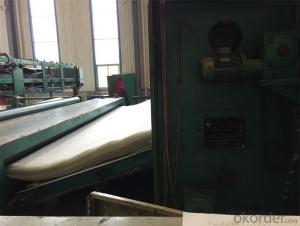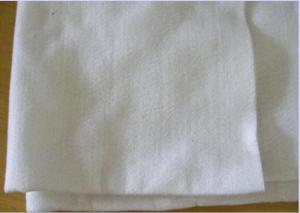Geotextil De Poliéster Needle Punched Nonwoven Geotextile PP Polypropylene Roll for Railway Construction
- Loading Port:
- China main port
- Payment Terms:
- TT OR LC
- Min Order Qty:
- 1000 g/m²
- Supply Capability:
- 100000 g/m²/month
OKorder Service Pledge
OKorder Financial Service
You Might Also Like
Specification
Type:
Geotextiles, Nonwoven Geotextile woven Geotextile
Place of Origin:
Shandong, China (Mainland)
Brand Name:
CMAX
Geotextile uses:
Filter: Geotextile fabric is an excellent filtering medium as it allows fluid to pass through the fabric yet retains fine particles, as you would see in an aggy drain. Great for wrapping perforated pipes and rock to create a path for fluid to pass though yet keep the fines out. Another large use in Australia is in the construction of a landfill cell, where filter geotextile sits atop the filtration rock separating the waste material placed on top allowing the leachate to pass through down to the liner.
Separate: Geotextile when used as a separation layer prevents two different fill materials such as aggregate and soil from combining. When used correctly the geotextile will increase the life span of the civil project, allowing the two separate layers to perform as designed for longer.
Protection: Geotextile when used as a protection layer acts as a cushioning barrier between the geosynthetic lining system and other layers of the dam or landfill cell. Generally the larger mass rolls of geotextile provide the best cushioning protection. As a protection barrier it helps prevent puncturing and leaks from external forces coming into contact with the liner.
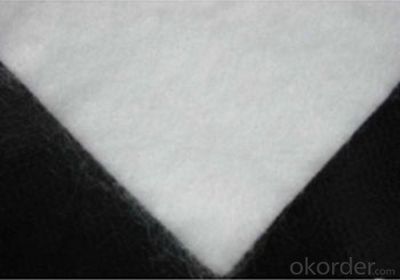
FAQ:
Q: What kind of payments does jenor support?
A: T/T, L/C, Cash are accepted.
Q: Do you charge for the samples?
A: Accordeing to our company policy, the samples are free, we only charge the freight fee. And we will return the freight fee during the next order.
Q: Can you produce according to customers' design?
A: Sure, we are professional manufacturer, OEM and ODM are both welcome.
Q: Do you have other products?
A: Yes, please check the pictures:
- Q: What is the purpose of using geotextiles?
- The purpose of using geotextiles is to provide reinforcement, separation, filtration, and drainage in various civil engineering and construction applications. Geotextiles help improve soil stability, prevent erosion, control sediment migration, and enhance the overall performance and longevity of infrastructure projects.
- Q: Can geotextiles be used for erosion control in agricultural fields?
- Yes, geotextiles can be effectively used for erosion control in agricultural fields. These permeable fabrics can prevent soil erosion by stabilizing the soil, reducing water runoff, and promoting vegetation growth. Geotextiles are commonly used to reinforce slopes, control sediment movement, and protect areas prone to erosion in agricultural settings.
- Q: How do geotextiles help with soil stabilization in steep slopes?
- Geotextiles help with soil stabilization in steep slopes by providing reinforcement and preventing erosion. When placed on the slope, geotextiles act as a barrier, holding the soil in place and preventing it from sliding or eroding downhill. The geotextiles also allow water to pass through while retaining the soil, reducing the impact of heavy rainfall or water flow on the slope. This helps to maintain the integrity of the slope, preventing landslides and ensuring long-term stability.
- Q: Who knows geotextile, how to sew, the best video
- Sewing machine can be sewn, you can also use hot air gun hot melt, I am specializing in the production of geotechnical materials
- Q: How do geotextiles help with filtration in wastewater treatment systems?
- Geotextiles serve as a crucial component in wastewater treatment systems by providing effective filtration. These specialized fabrics have excellent permeability, allowing water to pass through while retaining solid particles and contaminants. Geotextiles act as a physical barrier, preventing the clogging of drainage systems and ensuring efficient flow of water through the treatment process. They also assist in the separation and retention of suspended solids, which aids in the removal of pollutants, sediments, and organic matter from wastewater. Overall, geotextiles enhance the filtration capacity of wastewater treatment systems, leading to improved water quality and environmental sustainability.
- Q: How do geotextiles contribute to slope stability analysis?
- Geotextiles play a significant role in slope stability analysis by reinforcing the soil and enhancing its strength. They are used to stabilize slopes by adding tensile strength, reducing soil erosion, and improving overall stability. Geotextiles act as a barrier, preventing the soil particles from washing away during rainfall or other external forces. This helps to mitigate potential slope failures and allows for more accurate analysis and assessment of slope stability.
- Q: How are geotextiles different from other geosynthetic materials?
- Geotextiles are a type of geosynthetic material that is specifically designed for filtration and separation purposes in civil engineering applications. Unlike other geosynthetic materials such as geogrids or geomembranes, geotextiles are predominantly made of woven or non-woven fabric, which gives them excellent filtration and drainage properties. Additionally, geotextiles are more flexible and have higher tensile strength compared to other geosynthetics, making them suitable for a wide range of soil stabilization and erosion control applications.
- Q: How do geotextiles contribute to the safety of transportation infrastructure?
- Geotextiles play a crucial role in enhancing the safety of transportation infrastructure by providing soil stabilization, erosion control, and drainage management. They prevent soil movement and erosion, which can undermine the stability of roads, slopes, and embankments. Geotextiles also help improve the load-bearing capacity of the soil, reducing the risk of structural failure or settlement. Additionally, these materials promote effective drainage by allowing water to pass through while filtering out fine particles, preventing waterlogging and soil saturation. Overall, geotextiles contribute to the overall durability, longevity, and safe functioning of transportation infrastructure.
- Q: What are the installation techniques for geotextiles?
- There are several installation techniques for geotextiles, depending on the specific application and requirements. Some common techniques include trenching, anchoring, and overlaying. Trenching involves excavating a trench and placing the geotextile in the desired location, then backfilling the trench with soil or aggregate. Anchoring involves securing the geotextile to the ground using stakes or anchors, providing stability and preventing movement. Overlaying involves placing the geotextile on top of an existing surface, such as a road or landfill, to provide reinforcement and separation. The choice of installation technique depends on factors such as soil conditions, project specifications, and desired results.
- Q: Geotextile vertical permeability coefficient to retain a few digits
- According to GB / T-1998 in the short wire geotextile permeability coefficient, K = 1.0-9.9 between, so this coefficient should be retained after a decimal.
Send your message to us
Geotextil De Poliéster Needle Punched Nonwoven Geotextile PP Polypropylene Roll for Railway Construction
- Loading Port:
- China main port
- Payment Terms:
- TT OR LC
- Min Order Qty:
- 1000 g/m²
- Supply Capability:
- 100000 g/m²/month
OKorder Service Pledge
OKorder Financial Service
Similar products
Hot products
Hot Searches
Related keywords
